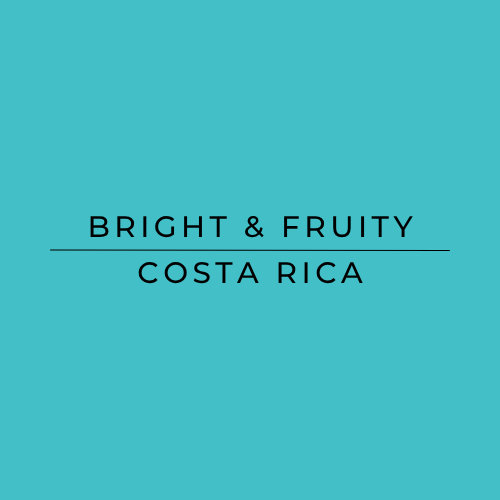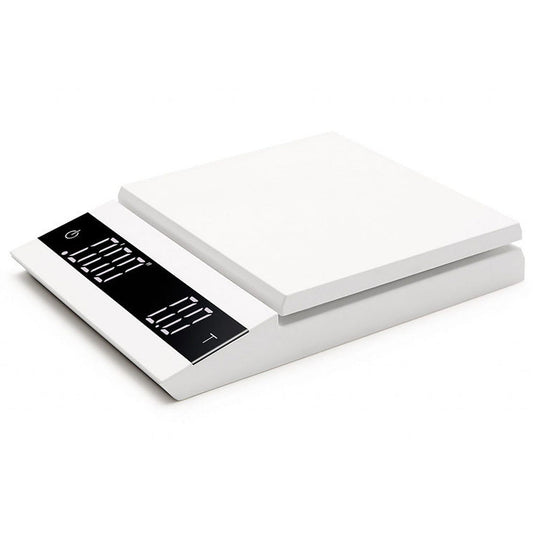This guide is for coffee tampers to fit ⌀58mm Portafilter baskets
I’m often asked, “What tamper should I buy for my espresso machine?” This question comes up frequently from both wholesale and retail customers, so I decided to synthesize my thoughts into a concise guide. By putting my recommendations in writing, I hope to provide a permanent reference, saving people from digging through hours of chats for my advice on tampers.
As someone who’s tested countless tampers, I’ve formed strong opinions about what works, what I enjoy, and what equipment I’d never recommend. Let’s start with the “absolutely avoid” category, as there are several tampers that fall into this group.
Coffee Tamper Comparison Overview
Here’s a quick summary of the tampers mentioned in this guide. Click the name to jump straight to that section.
| Model | Size | Price | Link |
|---|---|---|---|
| Decent Espresso v6 | ⌀58.35mm | £80 – £130 | Jump to section |
| Normcore Spring Loaded Tamper V4 | ⌀58.5mm | £35 – £50 | Jump to section |
| Push Tamper | 58.5mm | £139 | Jump to section |
TAMPERS TO AVOID:
1. Convex Tampers
First on the list are convex tampers. Despite a cult following among people who have been using them for many years, I’m not a fan. Just don't buy them.
Why?
I’m all about evenness in espresso preparation. When water flows through a good shower screen, it distributes (roughly) evenly. A convex tamper, however, compacts the center of the coffee bed more than the edges, undermining that evenness. Water, being the laziest molecule that exists, follows the path of least resistance, leading to a higher likelihood of ring channeling. This is bad for extraction and bad for flavour.
It's sort of rule 101 of coffee tamping that you want a flat, even tamp - so why buy a convex tamper? Plus, no hate from me, but convex tampers look pretty silly, rocking around unstably instead of sitting flat - making them the least practical option of all tampers.
2. Standard ⌀58mm tampers
If your espresso machine comes with standard 58mm portafilters, avoid any coffee tampers rated ⌀58mm - or worse, a ⌀57mm one, which I’ve seen far too often in cafes and restaurants during trainings. Portafilter baskets are typically ridged, with a diameter slightly wider than ⌀58mm.
Using a tamper that’s too small for the diameter of your basket leaves an non-compacted ring of coffee, Unless you're going to tamp around the edges (which is a huge hassle anyway, your non-compacted coffee in the basket is going to offer far less resistance than the centre, once again increasing your likelihood of ring channeling.
3. Punch activated tampers
Every time that I have used tampers that are self-punch activated, these tampers have always left me with a cracked puck, or a puck which has separated from the wall of the portafilter from where the punch has activated while I have been trying to tamp. This leads to a weakened puck integrity and increases the likelihood of channeling.
Defenders of such tampers will claim that once you get used to it, this stops happening - probably true. But tampers should be very easy to use and not require specialist techniques developed through hours of practice.
Punch activated tampers? it's a no from me.
TAMPERS TO CONSIDER:
Now we've got my initial meanness out of the way, let's get into which tampers I actually recommend.
Buying a ⌀58mm tamper is off the cards for me, so what size should you get? ⌀58.3mm tampers are the smallest I would suggest looking into. The first renditions of the Puqpress utilise a ⌀58.3mm tamping surface - although, while I think Puqpress is a very good product for the cafe environment, I personally wouldn't suggest buying one for home. There are better, cheaper options out there.
My preference leans toward ⌀58.4mm or ⌀58.5mm tampers. Anything larger, like ⌀58.7mm, can be too tight of a squeeze, risking suction that pulls the puck out of compression during tamping—not ideal.
Here are the individual models that I recommend:
1. Decent Espresso v6 ⌀58.35mm - £80 - £130 (Depending on model)
My favorite tamper, hands-down, is the (sadly no longer available) ⌀58.45mm model from Decent Espresso, which was the V3. This is not in production anymore, as Decent have switched to using a ⌀58.35mm tamping base, individually machined, not machined via mould - so there is a high machining quality. Their reason for switching from 58.45mm to 58.35 was because the 58.45mm can sporadically produce suction, although this is something I have never had happen to me personally.
This is the tamper that I have been using for the last 5 years and I can't recommend it enough.

Pros:
- Incredibly precise
- Dual-Spring Calibrated for consistent tamping
- Perfectly level tamping guaranteed
- No suction from puck compression
- No over or under-compression
- Easy to clean and repair
- Perfect Consistency between users
Cons:
- These tampers can be considered expensive, depending on who you ask - especially when shipping internationally. I think I paid about £130 for mine.
2. Normcore Spring Loaded Tamper V4 ⌀58.5mm - £35 - £50
A really good, cheaper alternative to the Decent Espresso tamper. The link above will take you to the official website, although it's worth noting, several retailers offer these tampers from UK distribution locations, making them cheaper to buy domestically. Do your research though to make sure that you are buying an authentic model.

Pros:
- Precise
- Dual-Spring Calibrated for consistent tamping
- Perfectly level tamping guaranteed
- No over or under-compression
- Much cheaper than its competitors
- Perfect Consistency between users
Cons:
- Lower build quality, spring can weaken through repeated use.
- Occasional suction from puck compression
- I have come across several models which have broken, but if you take very good care of it, you'll have no trouble.
3. Push Tamper 58.5mm - £139
If you've been making coffee as long as I have, Clockwork Espresso's Push Tamper is almost certainly something that you'd recognise. Mastermind Pete has been machining these super precise tampers for years, and they have made their way onto the World's stage at the World Barista Championships many times - and for good reason.
These are best used when the dose and grind size is set, and not something that you will be changing throughout the day, as changing the setting on them can be a bit annoying, when compared to the spring loaded tampers, which are just ready to go. If you're after maximum precision and consistency, these things will set you in the right direction.

Pros:
- Incredibly precise
- Non-stick and Anti-Vacuum
- High Quality Machining
- No over or under-compression
- Injury reduction ergonomics
- Perfect Consistency between users
- Customisable
Cons:
- These tampers can be considered expensive, depending on who you ask.
- Changing tamp depth can be annoying
Conclusions:
Choosing the right tamper is essential for maximising your quality output. It's one of those purchases that is surprisingly cheap for the degree of impact that it can yield. Convex tampers are a no-no. Stick to flat base tampers that are 58.5mm - if you can get hold of an auto-levelling spring calibrated tamper, that is ideal.
Take your brewing game to the next level:
Espresso lovers can also find our guide on the Best Coffee Tampers here.
Filter coffee lovers can find our guide on the Best Pourover Filter coffee recipes here.
Find some of the best free tools to accompany your brews here.
Find your perfect coffee from Harmony's selection of coffee beans here.
Check out our guide on resting coffee to get the most out of your brews here.
Find the Best Filter Coffee Grinders For Home here.
Learn about why RDT reduces static in coffee grinding here.
Love what we do here?
Consider a Harmony coffee subscription for your home or office!

About the Author
Ben is the Head of Coffee at Harmony Coffee, a competition barista and trainer with over a decade in specialty coffee. He’s trained hundreds of baristas, competed in UK coffee championships, and spends an unreasonable amount of time testing coffee grinders.
FAQ – Coffee Tampers
What size tamper should I use for a 58 mm portafilter?
For a standard 58 mm portafilter basket, the ideal tamper size is 58.3 mm to 58.5 mm, not exactly 58.0 mm. That slight increment makes better contact with the basket edges and reduces the likelihood of channeling.
Is a flat base or convex base better?
As written above, I would wholeheartedly suggest a flat base for your tamper.
Do I need a calibrated or spring-loaded tamper?
Standard tampers work well if you tamp perfectly. But spring-calibrated tampers are so much more precise over a large number of drinks. I don't see any downside to buying a spring-calibrated tamper, and you can reap all the benefits.
What’s the correct tamping pressure?
Consistency matters much more than tamping pressure. There is such a thing as tamping too hard and tamping too soft, but the window is quite large. However, whatever tamping pressure you choose, do the same thing every time. It's much easier to use a calibrated tamper to maintain consistency.











